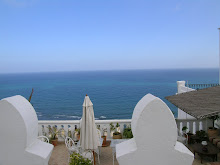Hammams, or public bathhouses, are a part of daily Moroccan life. Along with the mosque, medersa and communal bakery, it is an essential facet of traditional Moroccan life found in every neighbourhood.
To set foot in a hammam in Morocco is not only re-energizing and exfoliating but leaves you with a cultural experience you’ll never forget! It is the perfect spot for a respite from the simmering heat or to wash off the streets funk of the medina; where you get to mingle with the locals and share one of their most important customs.
Where to find a Hammam
You have two choices: go the traditional route and opt for a hammam in the medina or get a luxurious treatment at a fancy hotel or an upscale riad. The public outposts are more of an authentic experience, a soak-and-socialise centre where chatter flows like tap water. On the other hand, the fancy hotels and riads upscale versions are usually solitary and silent, but hospital-clean, modern and with a variety of professional treatments. Note that these hammams are private and as such not open to non-guests.
Hammam Etiquette
Men and women take their hammams seperately, so it is important to ask when the womens’ hours are. Inquire also about the fees, as most hammams charge a nominal fee for bathing and a seperate fee for a massage.
For a public hammam, tote your own toiletries, towels and bathing supplies - the stuff you would normally take to the shower. Hit the souk ahead and buy a bucket to douse yourself with water, a small plastic stool or mat to sit on and don’t forget a black scratchy glove called kese (pronounced key-s). The traditional soap - or ghasoul - is available onsite or can be easily purchased anywhere in the souk. Look for sabon beldi, plastic baggies of gooey olive-oil soap, and rhassoul, dried chips of herb-infused clay that functions as shampoo and body soap when you add a splash of water.
Unlike in Japan, your public bathhouse experience in Morocco doesn’t involve getting nude, so leave a pair of dark underwear on and a dry pair to change into afterwards. You are also expected to tip a few dirhams to the chap who looks after your bag.
What to Expect
Bathing in the Hammam is not your typical rub-a-dub-dub, the process involves different steps of scrubbing and soaking, drenching and dousing. If you’re a first-time visitor, this can befuddle so err on the safe side and order the services of a tayeba ( washing person).
Here’s a run down of the head-to-toe scrubdown experience: First, choose a spot in the hot room where you’ll sit on your matt. Now, the tayeba will apply sabon beldi all over your body and then alternate between scrubbing and lathering you thoroughly with the kese and splashing warm buckets over you. If rhassoul is used, it will be mixed with water and applied all over your hear. Again, it will be repeatedly rinsed out, while combing from the roots until your hair feels silky clean. This process of cleansing, scrubbing and kneading will take about an hour, with the finale a ceremonious dumping of the bucket over your head!
If you’ve never used a hammam before and all this constant scrubbing and cleansing sounds like an abrasive massage, just wait to see several layers of skin peel off like strands of dirty spaghetti! You will literally come out in new skin, as soft as a newborn’s.
Thanks to for the article
skip to main |
skip to sidebar

Tangier Time
- La Tangerina rated "excellent" by 45 travellers
About Me

- La Tangerina Guestbook
- You will find this magnificent little hotel in the heart of the Kasbah which is situated on the highest point of the old town (Medina) of Tangers. It has breathtaking views over the straights of Gibraltar and 10 unique rooms in which you can relax and enjoy this fine, well restored and beautiful guest house. We welcome your comments and travel tips - if you are a previous guest at La Tangerina and would like to leave a comment please head over to our web site and click on guest book. Your comments will be published on here. Thank you and looking forward to seeing you at La Tangerina soon.



No comments:
Post a Comment